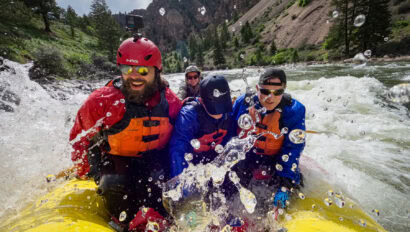
What’s the Best State for Whitewater Rafting?
So which state has the best whitewater rafting? The answer depends, since “best” can mean a lot of things. But these states are clear stand outs…
Video
About Damn Time
About Damn Time honors the trailblazing women who navigate Grand Canyon’s iconic rapids in handcrafted, hard-hulled dories and have carved their place in a traditionally male-dominated world. Told through the […]

Sign up for Our Newsletter










